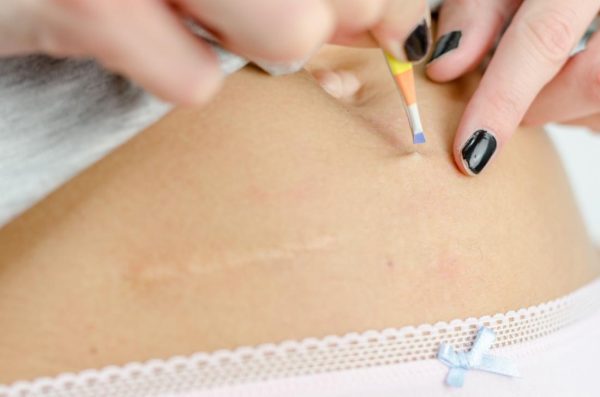
Ingrown Hair Lump Treatment
An infected ingrown hair also known as folliculitis typically looks like a bump, a hard lump, or a cyst under the skin. It may contain pus. You can usually treat them at home. Some people experience discomfort and irritation as a result of ingrown hairs, which are a common skin problem. There are certain circumstances in which an ingrown hair might develop into a firm lump beneath the skin, which presents its own distinct set of difficulties. This article will discuss the factors that lead to the development of ingrown hairs, including the reasons why they can become hard lumps, as well as provide some useful advice for effective ingrown hair lump treatment.
Understanding Ingrown Hairs
It is possible to have an ingrown hair if you cut a hair and it grows back into the skin, which can cause inflammation or discomfort. Shaving, tweezing, waxing, or using hair removal lotion are all examples of methods that might cause this condition. It can occur anywhere on the body where hair is removed at any time.
There are instances in which an ingrown hair might result in folliculitis, which is an infection that occurs around the hair follicle.
Typical locations for ingrown hairs are as follows: Cheekbones, cheekbones, and necks of males, the legs, pubic regions, and armpits of women, as well as the buttocks
Causes Of An Ingrown Hair
There are two ways that ingrown hair can occur.
- A hair can be forced back into its follicle if it is cut as it grows out. The follicle can become clogged with dead skin, which can cause the hair to grow under the skin or to re-enter its follicle or another follicle nearby. After this, the hair begins to grow inward rather than pushing through the surface of the skin instead.
- If you have hair that is coarse or curly, you have a greater chance of experiencing ingrown hairs. After shaving, tweezing, or waxing hair in the area, this can cause a type of ingrown hair known as pseudofolliculitis, sometimes known as “razor bumps.” This type of ingrown hair can be caused by cutting hair that is coarse or curly.
Identifying Infected Ingrown Hair
The first sign of an infected ingrown hair is often a bump. As the infection progresses, you may see pus, and the bump may grow larger. The area around the infected ingrown hair may also be a different color from the surrounding skin other signs are
- irritation
- itch
- feel warm to the touch
- swell
Symptoms Of An Ingrown Hair
A bloated, red, and itchy appearance may develop in the region surrounding the ingrown hair. It can grow inflamed to the point that it is painful and seems to be filled with pus. The formation of cysts, which are sacs of fluid beneath the skin, can be caused by ingrown hairs. Cysts can range from a small lump that is painless to a huge swelling that is infected
Ingrown Hair Treatment
Washing the area with a washcloth or soft toothbrush using a circular motion for several minutes can help release the hair. You can also try inserting a sterile needle under the hair loop and pulling the ingrown end to the surface.
Ingrown hairs often improve without treatment. It may help to stop shaving, tweezing, waxing, or using hair removal cream until the condition improves.
If the ingrown hair becomes infected, you may need an antibiotic cream from the doctor. In severe cases, oral antibiotics may be needed.
Ingrown Hair Removal
Some ingrown hairs do not develop into infections, and the majority of the time, they go away on their own within a few days.
If, on the other hand, the hair is located close to the surface of the skin, you might be able to remove it by gently grabbing it with tweezers that have been sterilized.
However, you should avoid digging for the hair because doing so raises the possibility of creating or spreading an infection.
If you have ingrown hair that is infected, you should never pick or pop it because doing so raises the risk of consequences.
Instead, use some warm water and soap and gently scrub the region. On its own, this may be able to assist in the removal of the ingrown hair from the skin.
Prevention Of Ingrown Hair
Washing your face with warm water and a gentle facial cleanser, exfoliating your skin before shaving with a single-blade or electric razor, shaving in the direction of the hairs, and using shaving creams to clean the region are all important steps in the shaving process.
Frequently Asked Questions On Ingrown Hair Turned To Hard Lump Underskin Treatment
1. What leads to the development of a solid bump beneath the skin when an ingrown hair occurs?
Hair can curl back or grow sideways into the skin, resulting in ingrown hairs. A painful, hard lump may form if the hair follicle becomes infected.
2. What are the distinguishing factors between an ingrown hair lump and other skin conditions?
Consulting a healthcare professional is crucial for obtaining an accurate diagnosis. Examine the lump, take into account your medical history, and perform imaging or biopsy if needed.
3. Is it possible to treat an ingrown hair lump at home?
Warm compresses, gentle exfoliation, and avoiding further irritation can help improve mild cases. It’s important to seek guidance from a healthcare professional, especially if the lump doesn’t go away or gets worse.
4. Is it better to pop or squeeze the lump?
It’s generally advised against attempting to pop or squeeze the lump yourself. Infection, scarring, and a potential worsening of the condition can result from this. Healthcare professionals should be allowed to handle any necessary procedures.
5. Which over-the-counter treatments work best for ingrown hairs?
Using exfoliating creams or gels with ingredients like salicylic acid can be effective in preventing and treating ingrown hairs. It is important to seek advice from a healthcare professional before trying out any new products, particularly when dealing with a lump.
6. At what point should I schedule an appointment with a doctor regarding a lump caused by an ingrown hair?
If the lump causes pain, grows quickly, exhibits signs of infection (such as redness, swelling, or pus), or if you’re uncertain about its nature, it’s crucial to promptly consult a medical professional.
7. Are there various medical treatments for treating an infected ingrown hair lump?
A healthcare professional may prescribe antibiotics for infection, depending on the severity. Draining the lump or performing a minor surgical procedure may be necessary in certain cases.
8. What steps can I take to avoid ingrown hairs in the future?
To avoid ingrown hairs, make sure to exfoliate regularly, use a clean razor, shave in the direction of hair growth, and keep your skin moisturized. If ingrown hairs continue to be a problem, you may want to explore alternative hair removal methods such as laser hair removal.
Final Words
Ultimately, experiencing an ingrown hair that transforms into a firm lump beneath the skin can be quite uncomfortable and worrisome. Approaching this issue with caution and seeking professional medical advice is crucial. Warm compresses and exfoliation can help in mild cases, but it’s crucial to remember that every situation is different.
Self-diagnosing or treating the condition without proper guidance can result in complications, such as infection or scarring. It is crucial to seek guidance from a healthcare professional to obtain an accurate diagnosis. They will be able to create a personalized treatment plan that takes into account the unique characteristics of the lump.
Healthcare professionals can address the underlying causes and provide appropriate guidance for managing and preventing future occurrences, whether through observation, medication or, in some cases, minor surgical procedures. It is crucial to intervene promptly, particularly if the lump exhibits signs of infection or if there are any doubts regarding its nature.

Leave a Reply